As a fan of the Back To the Future franchise I remember thoroughly enjoying the whole constructed reality of the “future”, which is now pretty much the present day. There are dozens, maybe hundreds, of articles listing what they “got right” or what they “got wrong.” Not coincidentally it all revolves around some of the more outlandish predictions. Did we really need an article to highlight that we don’t have hoverboards or flying cars? At the same time was it really a stretch that we would have nostalgia themed restaurants? Just like with Star Trek, some things we’ve leapfrogged beyond what was predicted while others are still outlandish. There is a category, however, of things which we actually made, and maybe even tried to use, that we just simply discarded or that just look different enough that people aren’t recognizing them:
Food Rehydrators
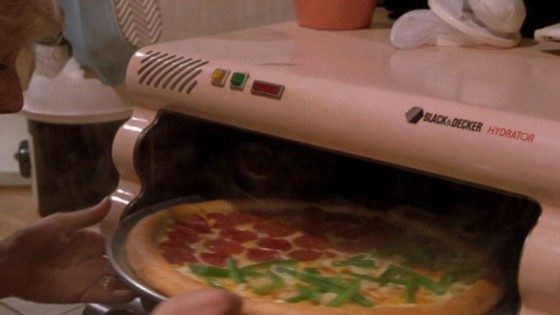
Wow, we were going to be very impressed with our ability to just set and go with the magical food rehydrator by Black & Decker. In just minutes you have a fully made meal ready for your whole family. Well, they certainly got that part more than a bit wrong. While we have had an explosion of speciality products meant to cut your time in the kitchen down (while simultaneously cluttering up your cabinets and counterts) we haven’t nailed food rehydration in seconds to produce crispy crust. Partly though we’ve moved away from the notion of instantaneous food anyway. Just like we didn’t start trying to microwave our Thanksgiving dinner, the trendy thing is to do more cooking from scratch or from the basics rather than as fast as possible. For those that don’t have the time there is an array of pre-made meals that would make your 1980s head spin. One part of the prediction did come true however. Remember what kind of pizza that was?

Back in the late-80s the idea that restaurants would be selling their products in the supermarket was a pretty novel concept, if it existed at all. Sure you could get a Tombstone Pizza, or Swanson’s Chicken Wings. But you couldn’t buy an assortment of TGIFriday’s appetizers, or Cheesecake Factory cheesecakes. Yet, there is Mrs. McFly with her store bought Pizza Hut “pan pizza” ready for the food hydrator.
Indoor gardens
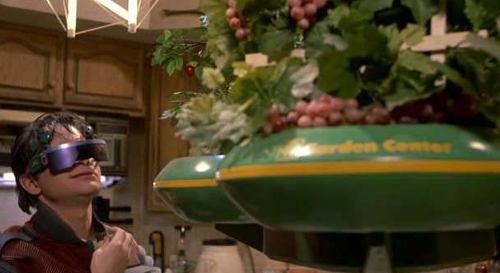
This one I’ve seen in a bunch of places. “Ha! Ha! A garden in your kitchen, how stupid!” It is somewhat ironic that the film captured our personality split on food. We want to hit up as much convenience at the store as possible, but we want to buy local food. The localvore movement was over a decade away, which has fostered in a return to gardening and home food production for many people. So to some extent, they got that right. However who ever heard of having your own indoor kitchen garden growing fruits and vegetables? Well, actually, the AeroGarden people are just one of several companies that create out of the box ready growing systems for your counter top or kitchen floor:
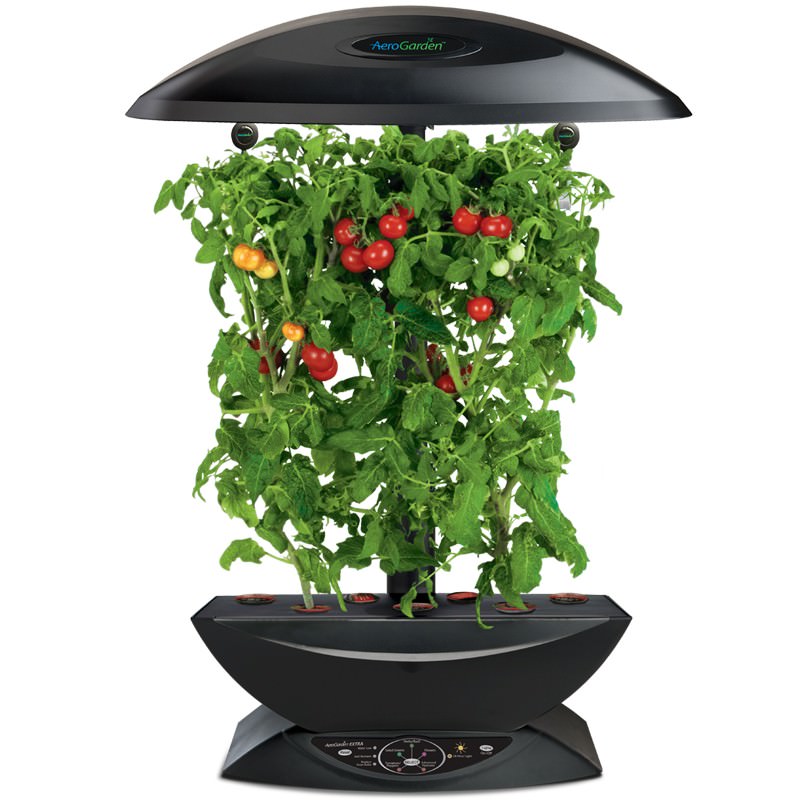
No, it doesn’t have a cool “retract into the ceiling” feature. Then again, who wants to waste what was an entire room on the second floor for that “feature” anyway. While this technology has been around for over a decade it just simply hasn’t caught on.
Smart glasses and personal electronics
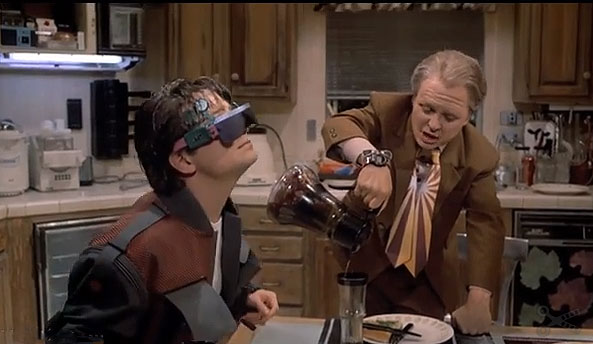
While many people are claiming that they got this “completely” wrong, I think they pretty much nailed this one. No, we don’t just use glasses for our phones or watching TV. Actually Google Glass has turned out to be more of a bust than a boom, although who knows what another ten years will bring. We do have things like Oculus Rift and other technologies that provide for a similar blocking experience, but that’s not why I think they nailed it. The big thing they got right about this was the immersion of ourselves into the connected world over the physical world, even in social settings. Of course the big divergence here, besides style and the device, is the notion that’s it’s just something “those kids” do. We all do it, at all times. Who better to capture the essence than The Onion :

Relatives Gather From Across The Country To Stare Into Screens Together
A thousand “channels”
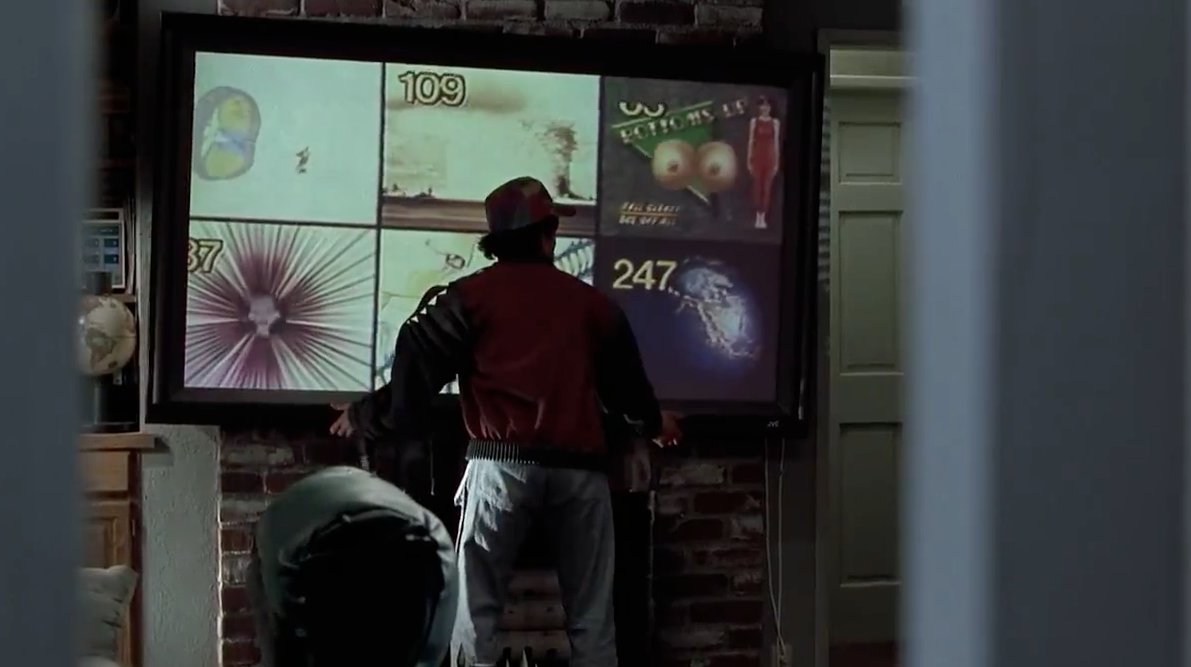
It should say “only” a thousand channels, which you can watch simultaneously if you choose to. Actually, there is a lot they got right in these scenes that people don’t give them credit for. First, there is the sheer proliferation of channels, if you choose to still be wedded to programmed video content. Your modern cable or fiber provider has literally hundreds of channels for you to choose from, including things like the scenery channel. You will also be watching it on your flat screen TV, although it won’t roll up like a movie projector (yet). You can even voice activate channel selection and settings, just ask Siri if you don’t believe me. Sadly, you can now also watch multiple channels at the same time. Modern 3D televisions actually have a feature that can simultaneously show two programs on the full screen at the same time so that two different users can be “watching” the same television at the same time. If anything though they’ve understated the amount of content that was available. With NetFlix, Amazon and other providers giving you access to thousands of shows and movies on demand, the whole “Cable of 1000 channels” is looking more anachronistic than futuristic in this 2015.
Video conferencing
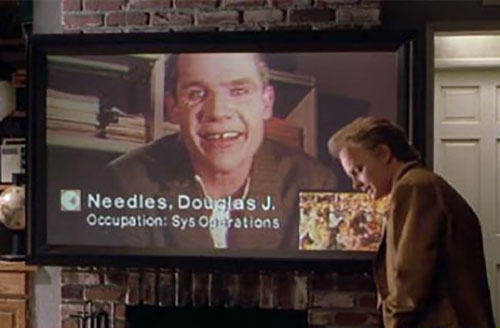
Here is another one that they sort of got but actually weren’t ambitious enough. We’ve had video conferencing of the type shown for over ten years, but who actually uses it like this? Yes, you can stream it to your TV (or Chromecast it). Yes, you actually can get other contextual information brought up along side of it. Skype even now has a universal translator for you. This is just not a technology that we seem to be dying for any more though. Yes, we use Google Hangouts, Skype or FaceTime, but notice it’s not for some huge group screen (usually) but for more personal conversations. Conversations are generally a one-on-one affair, we therefore aren’t looking forward to having the conversation on a big screen with surround sound for the entire house to see and hear. Besides, we’d rather send texts at this point anyway…
Biometrics

“Hey man can you thumb a hundred bucks?” “Just use her thumb print to open the door.” I’ve actually seen articles that laugh at this prediction too. Apparently the authors have never used Apple Pay or key fobs to get into their car or house. No, we don’t use biometrics as much as we thought we would. We’ve had thumbprint and retina scanners for well over a decade now. They just aren’t as practical. Nowadays you can unlock your phone with your thumb, but we’d rather just swipe that same phone over the scanner or the door lock than have our grubby fingers all over those devices.
Hovercams
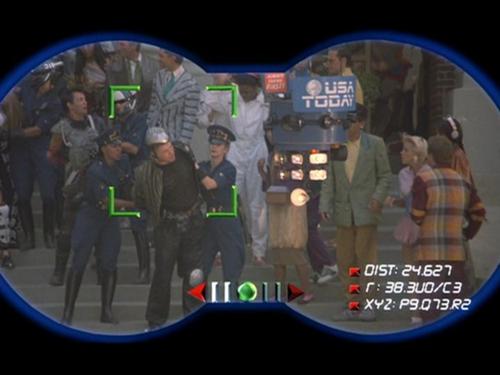
We actually almost just missed this, but technology finally caught up. No, they don’t use the same magical flying technology that our cars were supposed to. Instead they are just pretty boring, from an aerodynamics perspective, quad copters and airplane-like drones. But they are getting everywhere. You can buy them as toys for your kids, complete with cameras not too unlike the ones above. You can even have them track a programmed target. While those drones look pretty big and bulky by today’s standards (just look at that USA Today hovercam) Amazon’s delivery drones would probably give them a run for their money in a knife fight:
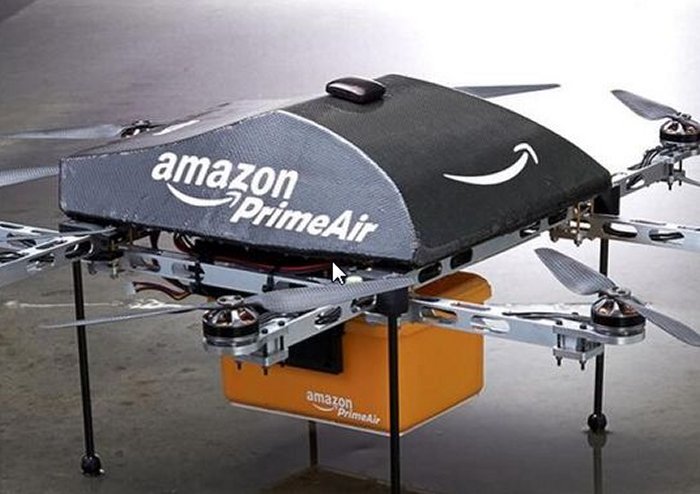
Robots
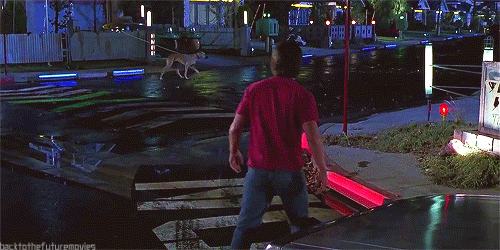
Which gets us to the pervasive use of robots predicted for the future. The most glaringly wrong one which people point out is probably the dog walking robot. That came complete with the same anti-gravity technology that seems to make everything else float. Although we do have a dog walking robot nowadays, it looks nothing like that and I don’t think anyone is dying to buy one yet:
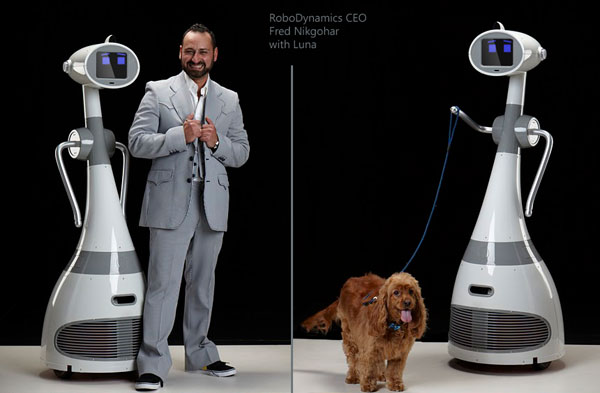
But besides that there were actually robots in many locations that turned out to be not as fanciful as they first seemed. Of course we don’t have robotic filling machines at the service stations, but we don’t have the flying cars either so there. However there were much more subtle robots in use. There was the ordering robot at the restaurant. That may sound fanciful until you notice that many restaurants nowadays are putting iPads on your table for you to enter your order in directly. Why bother with the inefficient and error prone waitress. Granted it won’t talk back to you with a Max Hedroom inspired Ronald Reagan, but that’s what Siri is for when it’s time to put your nose into your smart phone to ignore the rest of the people at the table. Also a lot of fast food chains also use robots in their back ends for the food production process, even if that isn’t directly visible to the customers.
We also had the roving trash can robot. Our trash cans remain stationary now, but we have a whole host of robots to help us with cleanup. From our favorite vacuuming robot, Roomba, to the yard cleaning Robomow, sites like RobotShop provide an entire array of office and domestic robot. The big trick is that while these things exist, we aren’t necessarily jumping at the chance to own one yet.
Certainly we can see that a lot of the supposedly wrong predictions in Back to the Future were actually surprisingly good. There are the obvious stylistic differences which they had almost no chance of getting right. There was also an element of being overly fanciful for effect in the movie. I doubt anyone really expected flying cars and floating everything else in a mere twenty five years. For the most part however, they at least captured the essence of where things are to a remarkable level of accuracy. Some things we already tried and discarded. Other things we have moved away from. In the end, however, they seem to have done as good or better than a lot of the other future predictions that have been tried.




 2015-01-02
in
2015-01-02
in

 9 min read
9 min read